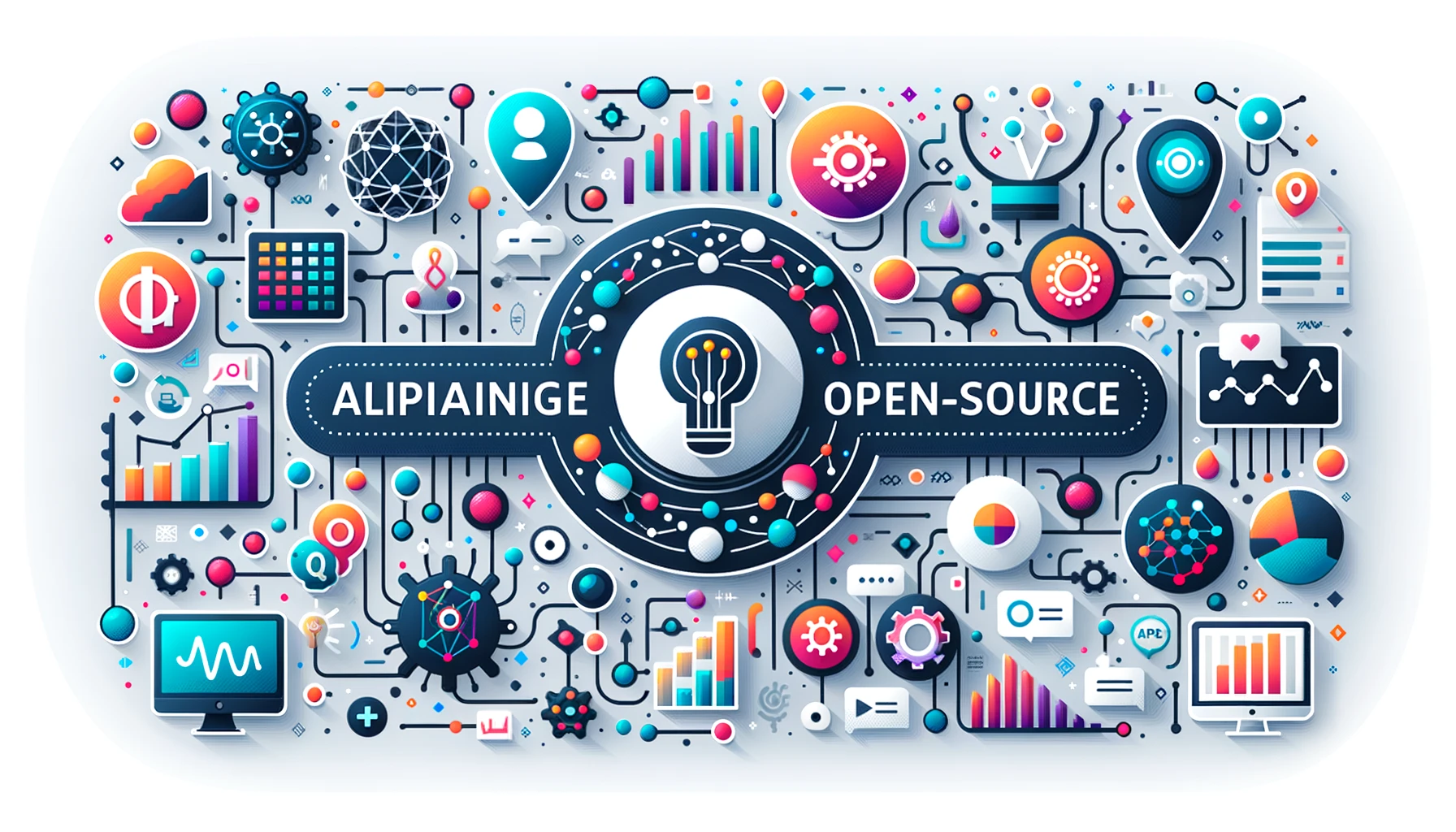In the ever-evolving world of artificial intelligence, there’s a silent revolution that’s reshaping how we approach machine learning — and it goes by the name of Automated Machine Learning, or AutoML. It’s not just a buzzword; it’s a paradigm shift, making the complex world of algorithms and data models accessible to a broader audience than ever before. At the intersection of this revolution lies a powerful and versatile language: Python. Its simplicity and robust library ecosystem have made Python the lingua franca for AI enthusiasts and professionals alike.
This synergy between AutoML tools and Python is not just transforming the workflows of data scientists; it’s democratizing AI, opening doors for innovators and thinkers across diverse fields to harness the power of machine learning. Whether you’re a seasoned developer looking to streamline your processes or a curious mind eager to dive into the deep end of AI, the fusion of AutoML and Python is a beacon of opportunity. Join us as we unravel the layers of this transformative technology, exploring the best AutoML tools of 2023 and how they’re forging a new future in automated intelligence.
Understanding AutoML
At its core, AutoML is about empowerment. It’s the technological equalizer in the machine learning ecosystem, designed to automate the end-to-end process of applying machine learning models. Gone are the days when only the most skilled statisticians and data scientists could build and deploy machine learning models. AutoML stands as a bridge between the complexity of machine learning and the practical needs of businesses, researchers, and hobbyists.
But what exactly is AutoML? In essence, it’s a suite of algorithms and methodologies that work collaboratively to automate the painstakingly intricate process of developing machine learning models. This includes everything from selecting the right model for your unique dataset to meticulously tuning parameters and engineering features that will ultimately define the success of your machine learning project.
Through AutoML, the barriers of entry to the machine learning world crumble. It simplifies model selection, turning what was once a manual and knowledge-intensive task into a smooth, automated process. Feature engineering, too, undergoes a transformation; AutoML tools intelligently recognize and extract the most impactful features from your data, saving you countless hours of trial and error. And when it comes to hyperparameter tuning, AutoML systems take the guesswork out of the equation, applying complex optimization strategies to fine-tune your models to peak performance.
In this section, we’ll explore how AutoML is not just changing the machine learning workflow—it’s revolutionizing it, enabling more people to participate in the creation of intelligent systems and to solve problems that once seemed out of reach.
Python and AutoML: A Synergistic Relationship
Python’s rise as the programming language of choice for data science is no fluke. Its straightforward syntax and powerful simplicity are amplified by an ecosystem rich with libraries and frameworks, making it the ideal companion for AutoML. Together, they form a partnership that’s driving innovation in data analysis and prediction to new heights.

The Python ecosystem boasts tools that seamlessly integrate with AutoML, such as scikit-learn for general machine learning tasks, pandas for data manipulation, and numpy for numerical computing. But the real game-changers are the specialized libraries designed to work hand-in-glove with AutoML platforms. Libraries like TPOT and Auto-Sklearn act as automated data scientists in their own right, capable of sifting through millions of possible combinations of algorithms and preprocessing steps to present the best-performing solution.
Consider the power of a simple Python script employing TPOT. With a few lines of code, you can instruct TPOT to explore a vast universe of pipelines that preprocess your data, select features, and tune multiple machine learning models. All it needs is your dataset and a goal; TPOT handles the rest, iterating over countless possibilities to deliver a model not just fit for purpose, but optimized for it.
Or take Auto-Sklearn, which tackles the challenge of model selection and hyperparameter tuning with a Bayesian optimization approach. It evaluates the performance of numerous models against your data, learning from each iteration to refine its predictions and recommendations, all while you, the programmer, can step back or focus on other aspects of your project.
The relationship between Python and AutoML is symbiotic. Python provides a nurturing environment for AutoML to thrive, and in return, AutoML injects Python’s data science capabilities with unprecedented levels of automation and intelligence. This section will delve into practical examples, demonstrating how Python scripts leverage AutoML to transform raw data into insightful predictions, making the most complex data science tasks accessible to all.
The Role of AutoML in Data Science Workflows
In the intricate tapestry of data science, AutoML emerges as a critical thread that weaves through the fabric of the entire workflow. Its integration into data science pipelines represents a paradigm shift, where the speed and efficiency of machine learning are no longer bottlenecked by the manual, often cumbersome, stages of model development. Instead, AutoML acts as a catalyst, accelerating each phase of the pipeline, from data preprocessing to model deployment.
The magic of AutoML within data science workflows lies in its ability to serve both novices and experts. For newcomers, it lowers the towering barriers to entry, granting them the keys to a once-gated realm of advanced machine learning techniques. It’s akin to having a seasoned mentor guiding the way, automating complex tasks and offering insights that would typically take years of study and experience to acquire.
For the seasoned data professional, AutoML is not a replacement but a powerful assistant that complements their expertise. It automates the mundane, freeing up valuable time for experts to tackle more strategic, high-level aspects of their projects. This collaboration between human ingenuity and algorithmic precision is where AutoML shines, turning data science into a more creative and impactful discipline.
The democratization of access to sophisticated ML techniques is perhaps the most significant contribution of AutoML. It levels the playing field, enabling companies of all sizes to harness the predictive power of their data. Small startups can now compete with tech giants, and non-profits can employ predictive analytics to further their causes. With AutoML, the power of machine learning is no longer confined to the echelons of large corporations with deep pockets and specialized teams.
In this section, we will explore real-world scenarios where AutoML is integrated into data science workflows, illustrating its transformative impact across industries. We’ll also discuss how AutoML is not just a tool for the individual but a force multiplier for teams and organizations, democratizing data-driven decision-making across the board.
Future Directions and Advancements in AutoML
As we stand on the cusp of a new era in artificial intelligence, AutoML is poised to be one of the most influential drivers of innovation. The trajectory of its development points to a future where the creation of advanced machine learning models becomes as routine as drafting a spreadsheet. The predictions for AutoML’s evolution suggest an unfolding landscape where its capabilities will become even more nuanced and powerful, making today’s cutting-edge technology tomorrow’s standard practice.
The horizon of AutoML is dotted with advancements that promise to further simplify the user experience while enhancing the sophistication of its offerings. We’re looking towards a future where AutoML tools will not only select and tune models but also devise entirely new algorithms bespoke to specific data challenges. The integration of AI ethics and explainability into AutoML platforms is also anticipated, ushering in a new age of transparent and responsible AI.
For non-experts, this future heralds a democratization of AI that could rival the explosion of personal computing in the 1980s. AutoML stands to empower entrepreneurs, educators, artists, and more, enabling them to leverage AI without the need for deep technical knowledge. It’s not just about making machine learning more accessible; it’s about embedding it into the fabric of everyday problem-solving, where anyone with an idea can bring it to life with AI.
The impact on the broader field of AI will be profound. AutoML could serve as the great equalizer, breaking down the silos of expertise and inviting a diversity of perspectives into the AI development process. With this inclusivity comes a surge of innovation, as fresh minds apply AI in ways that challenge the status quo and push the boundaries of what’s possible.
In this final section, we’ll gaze into the crystal ball of AutoML, envisioning the advancements on the horizon and contemplating their implications for society. We’ll discuss how AutoML will continue to evolve and what this means not just for the AI specialists, but for every one of us in the increasingly AI-driven world.
Conclusion
The journey through the world of AutoML has revealed a landscape where complexity is tamed, and the power of machine learning is unleashed for all. The significance of AutoML cannot be overstated; it stands as a beacon for progress in the field of AI, transforming the arcane into the accessible, the laborious into the effortless. With the backing of Python, a language that has become synonymous with AI, AutoML is not just an option but a necessity for anyone looking to harness the true potential of their data.
Whether you’re a business looking to refine your operations, a researcher seeking to uncover new insights, or a developer aspiring to build the next groundbreaking AI application, AutoML and Python are your steadfast allies. Together, they offer a foundation upon which you can build, innovate, and grow, regardless of your starting point in the vast universe of AI.




